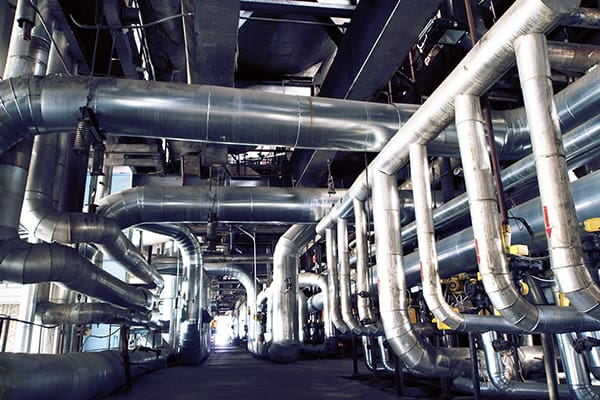
Camp Lejeune officials may have known of potential hazardous contamination as early as 1980. But they only began to act in 1982 and did not finish shutting down contaminated wells until 1985. Exposure to contaminated water at Marine Corps Base Camp Lejeune occurred between 1953 and 1987.
Questions remain about what exactly happened on base and what kept officials from addressing water contamination more quickly. Advocates, politicians and experts have worked to uncover the truth. Their findings suggest that at times, Camp Lejeune did not take proper action to ensure the safety of people on base.
A History of Water Contamination at Camp Lejeune
According to a 2014 study, dangerous chemicals contaminated Camp Lejeune drinking water from 1953 to 1985. Risk of exposure continued until 1987. The chemicals came from a leaking fuel depot and an off-site dry-cleaning facility. They contaminated 3 water distribution plants that served the majority of family houses on base.
Experts estimate that contamination at the Hadnot Point plant began in 1953. Then, in 1957, chemicals began contaminating the water at the Tarawa Terrace plant. From 1972 to 1985, the Hadnot Point plant sometimes supplied contaminated water to the Holcomb Boulevard plant.
People on base may have developed health issues like cancer and reproductive issues from exposure to water from these plants.
A Timeline of Finding Contaminated Water at Camp Lejeune
According to available documents, contaminated water was first discovered at Camp Lejeune in 1980. That year, Camp Lejeune began testing water for a chemical called trihalomethane (THM). Chemists were unable to confirm the presence of THM because of interference from other chemicals.
Despite warnings of unidentified chemicals in the water, Camp Lejeune officials did not act right away. The process of identifying these chemicals, shutting down affected wells and alerting the public took years. The events surrounding Camp Lejeune shutting down contaminated wells include:
- May 1982: PCE and TCE are identified in the Hadnot Point and Tarawa Terrace water distribution systems during routine testing. PCE and TCE were the chemicals interfering with the 1980 THM testing results.
- November 1984: Test results from wells served by the Hadnot Point plant convince Camp Lejeune officials to shut down several wells.
- December 1984: The news of contaminated water at Camp Lejeune becomes public. The base’s newspaper publishes an article about their water-testing results and the shut-down wells.
- January 1985: Further testing results in more wells being shut down. At the same time, contaminated water from the Hadnot Point plant is routed into several other housing areas.
- February 1985: At this point, the most contaminated wells have all been shut down.
Given this timeline, questions remain as to why it took so long for Camp Lejeune officials to address water contamination. Between 1980 and 1985, many people on base were likely exposed to dangerous chemicals through their drinking water.
Since the news of contaminated water became public, Camp Lejeune officials have been under scrutiny. Many experts and advocates say official responses have been inadequate or misleading.
Camp Lejeune’s Response to the Discovery of Water Contamination
Experts, advocates and lawmakers have tried to understand the events at Camp Lejeune. In 2010, a congressional subcommittee looked into the matter. It noted that Marine Corps officials spent decades preventing full disclosure. It also asked why it took more than 4 years to shut down wells with known contamination.
It has sometimes been difficult to get records from the military about the contamination at Camp Lejeune. This has slowed down the investigation process. For example, certain military records about benzene contamination were only uncovered in 2009. These records changed previous conclusions about contamination.
“The U.S. Marine Corps continue[s] to view past environmental contamination at Camp Lejeune as a public relations battle rather than a public health hazard.”
The Problems With Camp Lejeune’s Reasons for Delaying to Act
The Marine Corps has pointed to the lack of federal regulations at the time they discovered contamination. The federal government had not yet finalized regulations for cancer-causing substances. While this is true, there is evidence officials had reason to act when chemicals were discovered, including:
- 1974 Base Order 5100.13B: In 1974, the Commanding General at Camp Lejeune issued this order. It warned his command of the potential harms caused by organic solvents in drinking water. PCE and TCE are both organic solvents.
- 1982 Memorandum: In 1982, a Camp Lejeune chemist wrote a memorandum about the PCE and TCE discovered in the water. The chemist noted that the Safe Water Drinking Act did not regulate either chemical. But she also cited links between exposure and serious health issues.
These documents suggest that Camp Lejeune did not need federal regulations to understand the dangers of PCE and TCE. Still, they did not complete the process of shutting down wells for several more years.
The Marine Corps also released a statement saying they shut down wells once they identified the source of contamination. But many wonder why they did not shut down the wells as soon as they learned the water was contaminated.
Questions remain about the exact chain of events and behind-the-scenes actions at Camp Lejeune. But it is clear that contaminated water put many people at risk.
In 2022, President Biden signed the Camp Lejeune Justice Act. Eligible victims can now sue the government for exposure to contaminated water. Qualified lawyers can help Camp Lejeune Marine veterans and other victims understand their legal options.




